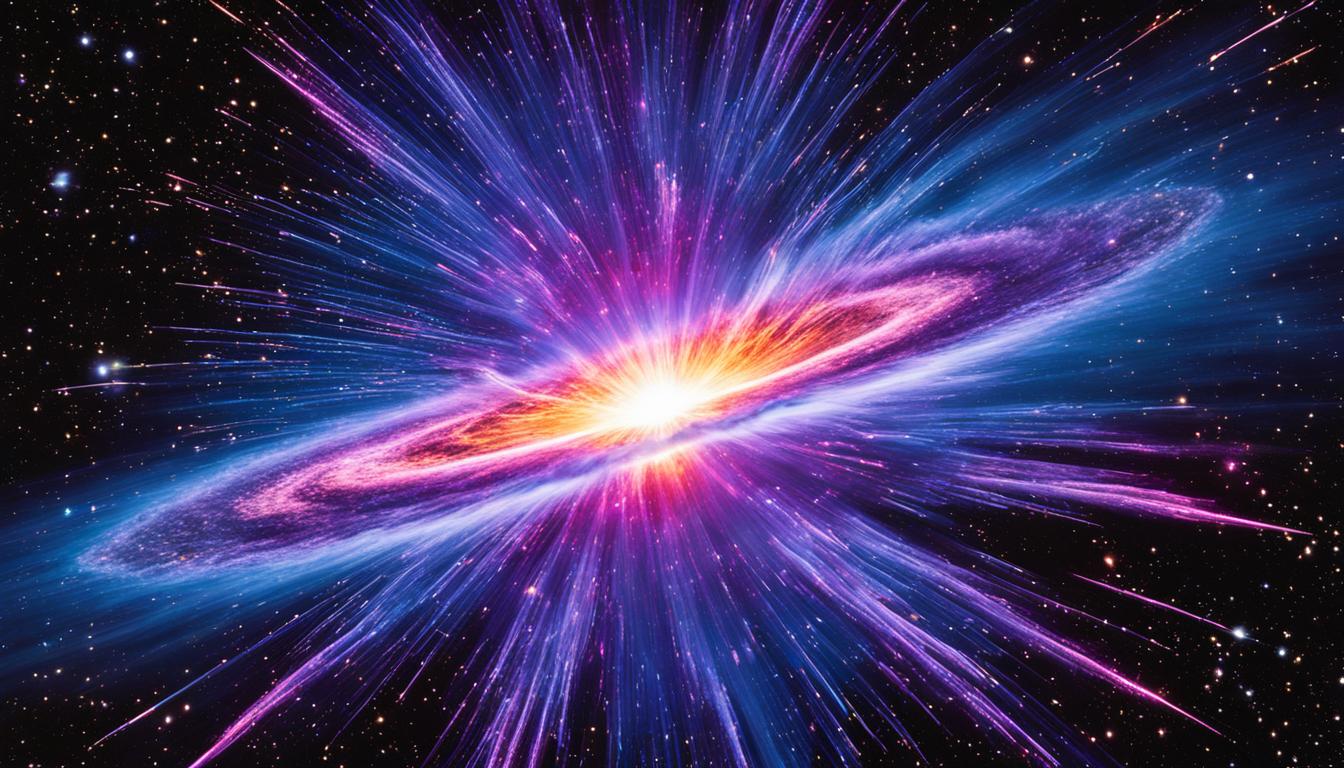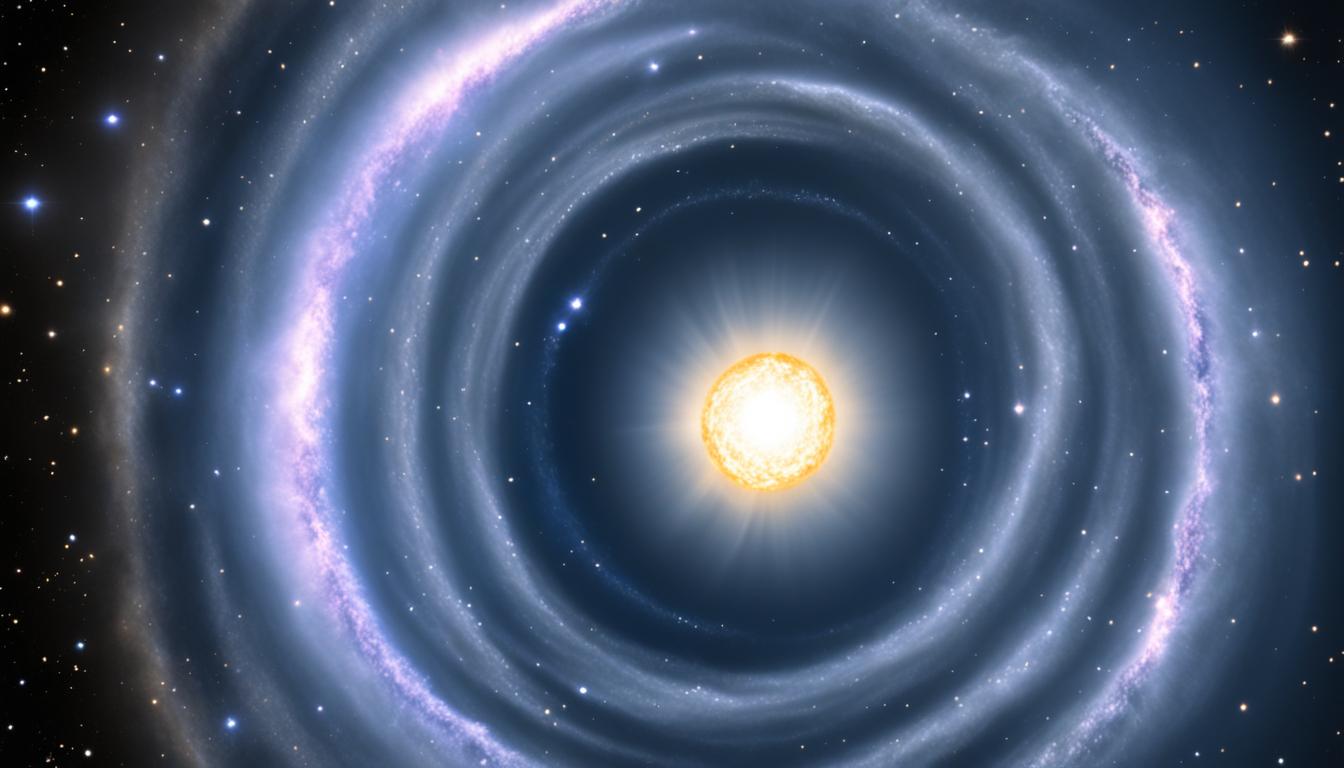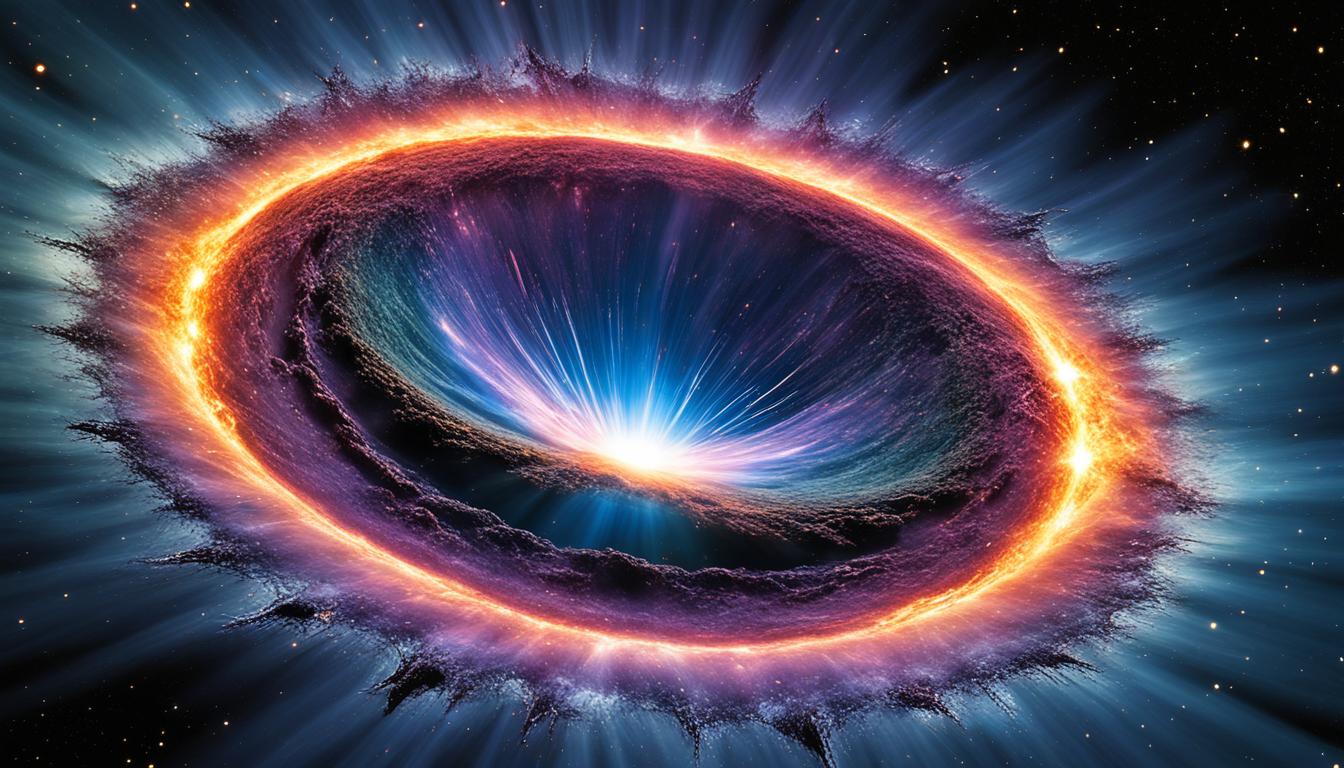Imagine being under the stars and seeing one bright star suddenly become brighter. This is a supernova, a rare event that still happens every 10 seconds in the universe. Astronomers have long been fascinated by these exploding stars, wondering which types of stars explode in such grand fashion. The answer is both easy and complicated. Do we know what types of stars end their lives with supernovae?
Exploring supernovae starts with understanding stars and their explosions. Originally, scientists looked at the hydrogen in the star’s light to name two main types of supernovae: Type I (without hydrogen) and Type II (with hydrogen). But studying their light over time has shown us more. Massive stars, 8 to 200 times the size of our Sun, go out with a bang when they run out of nuclear fuel. This leads to Type II supernovae, such as II-L and II-P, named for their light behavior, or II-b and II-n, known by their spectra.
Check this out, too: How to Read the Stars: Beginner’s Guide
In contrast, Type I supernovae, especially Type Ia, happen in pairs of stars. In these systems, a white dwarf gets material from a companion star. When the white dwarf gets too much, it explodes, creating a blast that’s helped find out about dark energy. This work was so significant that Saul Perlmutter, Brian Schmidt, and Adam Riess won a Nobel Prize for it.
There are also Type Ib and Ic supernovae, which come from stars that lost their outer layers. Type Ib keeps some helium, while Type Ic loses both hydrogen and helium. Let’s go deeper about these big stars that end their lives with supernovae. Let’s take a look at what types of stars end their lives with supernovae.

Stars Life Cycle
Stars travel unique paths as they evolve, depending on their mass. Low-mass stars, such as our Sun, turn into white dwarfs. Later, they cool off and become black dwarfs. These types of stars can live for trillions of years. Massive stars are over ten times the mass of our Sun go through quick and big changes. These stars turn into red giants and begin making iron in their cores through fusion. Once their cores are mostly iron, fusion stops. This leads to the formation of a supernova.
The creation of a supernova is very important for the universe. It shoots material into space, making elements heavier than iron. This process also creates new elements and isotopes and produces X-rays and gamma rays. Massive stars end their lives either as neutron stars or black holes after a supernova event, based on their core’s mass. The journey of the supernovae actually help us how the universe grew and came to be in some sense.
Core-Collapse Supernovae
Core-collapse supernovae mark the spectacular end for big stars. They release a huge amount of energy. This happens when stars at least 10 times bigger than our Sun collapse. When this occurs, the star’s core becomes only about 10 km wide, like Manhattan’s size. After this, a very bright phase begins. This light can be brighter than billions of stars together.
Type II Supernovae
Stars heavier than eight solar masses go through Type II supernovae when they run out of fuel. This leads to a core collapse. The outer layers explode out. During this, a neutron star can form thanks to the pressure against gravity. Different types, like II-L and II-P, show different patterns in their brightness over time. The remnant of Supernova 1987A is a great place for study. Over 50,000 parsecs away, it exploded in 1987. This moment is crucial as it helps us learn more about where heavy elements are in space.
Type Ib and Ic Supernovae
Type Ib and Ic supernovae happen when big stars lose their outer layers. They lose their hydrogen and sometimes helium before collapsing. Type Ic stars lose both hydrogen and helium. This can be because of stellar winds or from being in binary systems. These events show the different ways stars can end in a supernova. These supernovae throw out most of the star’s mass into space. This matter is important as it seeds space with elements needed for new stars.
Thermonuclear Supernovae: Type Ia
Type Ia supernovae occur in binary star systems. A white dwarf takes in material from its partner until it reaches a breaking point called the Chandrasekhar limit. Then, it explodes, shining incredibly bright, about 5 billion times more than our Sun. This brightness level stays quite stable.
Sometimes, in binary systems, two white dwarf stars crash into each other. This also leads to a Type Ia supernova. For example, in Henize 2-428, two white dwarfs near one solar mass could merge, causing a supernova in about 700 million years. This shows that a possibility exists for such a situation, especially when there are no supergiant or giant stars around.
There’s another way these supernovae can happen, involving a white dwarf slowly gathering material from a companion star. However, this method seems to create fewer supernovae, only around 20%. It underlines how diverse and important the ways are that lead to these grand explosions in binary systems. The most recent explosion close to us was in 1680. Before that, we saw them in 1572 and 1604. These events mark the powerful end of stars in binary systems. They offer us a glimpse into the active and, at times, explosive nature of our universe.
Supernova in White Dwarfs
A supernova in white dwarfs happens in two main ways: through accretion or stellar mergers. These lead to powerful explosions, each with its own characteristics and outcomes.
Accretion Process
In a binary star system, the accretion-triggered explosion happens when a white dwarf collects material from its partner star. This makes the white dwarf gain more mass until it hits the Chandrasekhar limit. Then, a massive explosion occurs. Despite years of study, many details about this process are still unknown. About 1% of white dwarfs will end in a supernova event. The amount of material needed for the explosion is exactly what Subrahmanyan Chandrasekhar predicted. This discovery is a huge advancement in our understanding. It links theory with real cosmic events.

Stellar Mergers
Another way for a supernova in white dwarfs to occur is through a stellar merger. This happens when two white dwarfs crash in a binary system, reaching a critical mass together. This launches a powerful supernova. These stellar merger supernovas contribute unique events to the cosmos. Over recent decades, we’ve made great strides in understanding these events. But mysteries like the exact trigger point for the explosion still puzzle us.
The Aftermath of Supernovae
After a supernova, the remains of the exploded star create important space objects. These objects can become neutron stars or black holes, depending on the star’s size.
A neutron star forms when a big star’s core collapses. This core is at least ten times bigger than our Sun. When its fuel runs out, gravity crushes it. This makes protons and electrons turn into neutrons. Neutron stars are very dense and stable. They can rotate quickly, sending radio waves into space in bursts. What’s interesting about neutron stars is that they are small (smaller than our Sun) but are extremely heavy. It’s quite a puzzle because that kind of density is not something we know here on Earth. That means that there is great deal to research about neutron stars.
Another outcome is the formation of black holes. If the core is massive enough, it keeps squeezing. This makes a black hole. Black holes have such strong gravity that nothing, not even light, can escape. They come from stars bigger than eight suns before exploding. Black holes may seem rare but there are actually a lot of them in the universe. The problem is they don’t happen as often as neutron stars or other types of supernovae explosions. The ones we have have happened way long time ago.

Historical Observations of Supernovae
Historical supernovae observations have really helped us learn a lot about the night sky. In 1604, we saw Kepler’s Supernova and Tycho’s Supernova in 1572. These were both very bright and could be seen without a telescope. They were carefully watched by smart astronomers like Tycho Brahe. After they exploded, we could still see their leftovers, like Cassiopeia A and the Crab Nebula. These are studied a lot today. The Crab Nebula came from SN 1054, which we saw in July 1054.
The brightest supernova seen was in 1006. It was so bright; it could even be seen in the day and was maybe 100 times brighter than Venus. Many people wrote about this event, which helped us know where it happened. Now, we can find it in the sky, like the constellation Lupus. The last supernova we saw in our galaxy was in 1680. Then, there was one in the Large Magellanic Cloud in 1987 that we watched well. Scientists think supernovae happen every 25 to 100 years in our galaxy.
Conclusion
In conclusion, what types of stars end their lives with supernovae has a very simple answer. Stars that are 8 to 100 times the size of our Sun end their lives with supernovae. When these huge stars complete their life cycles, they can explode in what we call a core-collapse supernova. This big event happens when these stars, at least ten times heavier than our Sun, reach a point where fusion stops, and the core collapses, leading to a supernova. This explosion can make the core incredibly hot, exceeding 100 billion degrees.
Contrastingly, stars like our Sun have a calmer fate. After their middle and later lives, they turn into white dwarfs. It’s a quiet end compared to the big bang of supernovae. If a white dwarf is in a system with another star, it can explode in a thermonuclear supernova. This happens when the white dwarf gains so much material that it exceeds a certain mass limit, causing a powerful explosion.
After these explosions, interesting things are left behind. Supernovae help form dense neutron stars or even black holes if the original star is incredibly big. Besides this drama, these explosions spread crucial elements like oxygen and iron into space. This enriches space and helps new stars and planets form. By studying stars and their life cycles, we gain a deeper understanding of the universe.
In history, studying supernovae has been key to understanding the universe’s workings. Astronomers like Kepler and Tycho Brahe documented these events in the past, and their findings are still relevant to modern science. They alll wanted to learn about what types of stars end their lives with supernovae or other types of explosions that makes the neutron stars or black holes in our universe.
FAQ
What types of stars end their lives with a supernovae?
Massive stars die in a supernova explosion. They’re much bigger than our Sun. Stars in a twin system may also explode. This happens when one collects a lot of material from one’s partner.
What is the life cycle of a star?
Stars change based on their size. Big stars die quickly in a blast. They make new things for the universe. Smaller stars take longer to change. Some get very big before they fade away.
What are the main types of core-collapse supernovae?
Core-collapse supernovae come in different types. Some have hydrogen, like Type II. Others are missing hydrogen but have helium. These types mainly come from stars losing their outer parts.
What is a Type Ia supernova?
Type Ia supernovae happen in binary systems. They’re made by a white dwarf and another star. When the white dwarf gets too big, it explodes. These explosions help us measure faraway things in space.
How do supernovae occur in white dwarfs?
White dwarfs explode in two ways. One is when they gather material and burst. The other is when two of them come together. If enough material is squeezed into one spot, it can’t hold anymore and blows up.
What is the evolution process of a supernova?
After a star explodes, it leaves behind a bright remnant. This makes new things and helps stars form. The leftovers add to the beauty and mystery of space.
What are the possible remnants of a supernova?
When a supernova happens, it could leave a neutron star or a black hole. Neutron stars are super dense balls. If they’re even heavier, they become black holes. Black holes are places where not even light can escape.